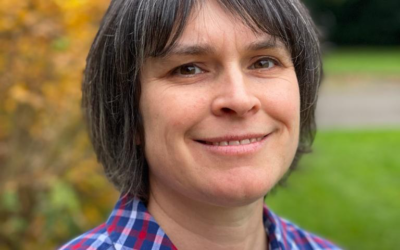Dr Mollie Hunton discusses the homeopathic treatment of a condition that affects so many women
Endometriosis is a gynaecological complaint that seems to be becoming more common. It is defined as the presence of endometrium (the lining of the womb) outside the uterus. The main symptoms are painful periods, heavy periods, pelvic pain, pain on intercourse, ovarian cysts and sometimes bowel symptoms. It currently affects two million girls and women in the UK.
So how does it occur? There are a number of theories to account for the condition which involves retrograde spillage of endometrium down the fallopian tubes during menstruation. The normal situation is that spillage is absorbed by the body, but in endometriosis it is not and so it sits around in the pelvis wherever it lands, often on the ovaries. That suggests that the immune system in the pelvis is not working well. As it can lead to blockage of the tubes and interference with ovarian function, it can also cause fertility problems.
Diagnosis is made by the gynaecologist carrying out a laparoscopy and having a look inside the pelvic cavity. As this method of diagnosis is available now, it is readily used and as a result more cases are identified than 30 years ago when it was not available. It is carried out on teenagers who complain of severe painful periods and is often found at that age. The youngest patient in my first study of this condition was 13 when it was diagnosed in her.
Usually in conventional treatment, hormones are used to suppress menstruation – no periods, no endometriosis. It seems to work well in some people despite merely suppressing symptoms and for those people badly affected, laser surgery may be advised. However, a lot of people have side-effects to one of the main treatments, Danol. Others are not helped and for some women the symptoms return after stopping the conventional treatment. For these women and those with fertility problems (the treatment means they have no hope of pregnancy whilst on the medication) homeopathy is particularly useful.
Patient audits
As I was seeing a number of patients with endometriosis I decided to study their histories closely to see what I could learn. In homeopathy we are interested in everything about the patient so each person had provided a lot of information about themselves, including their past histories. This proved to be the most helpful aspect because it led me to a much better insight into their condition.
My first study of eight patients was to investigate whether homeopathic treatment was effective. The patients were seen in both general and private practice. I used the Glasgow Homoeopathic Hospital outcome score to assess the patients’ responses, where +4 is cure of symptoms, 0 is no change and -4 is death. From my results, all patients had considerable relief of symptoms, especially of heavy periods, painful periods and pelvic pain. All felt very well in themselves. However, I followed them up afterwards and some had had relapses. I needed to find out why.
Homeopathic remedies prescribed were for pelvic pain of which Apis helped but Belladonna did not seem to. The most useful remedies were Folliculinum and Oophorinum, both made from different parts of the ovary. These two remedies are given in a sequence that I worked out in studying this group of patients. One tablet of Oophorinum 30c is given daily from days five to nine inclusive and Folliculinum 30c is given, one daily, from days 10 to 14 of the menstrual cycle. The remedies are indicated where there is irregularity of the cycle, ovarian cysts or infertility. This regime is also used to good effect by other doctors as previously reported by Dr Sara Eames. I also prescribed Candida 30c, Carcinosin for one woman who had a strong family history of cancer, Lachesis, Pulsatilla, Sepia, Sulphur, Nux vom and Calc carb I prescribed for locals and for the constitutional remedy.
I noticed that endometriosis can occur at any age between puberty and the menopause and there was often a history of multiple repeated courses of antibiotics and recurrent attacks of thrush. Women experienced a lot of stress and often had poor diets high in sugar. I thought that this could be related to poor immune system function, poor or uncoordinated tubal and uterine motility function which would cause pain and what I came to call the “tough ovary syndrome”. This seemed to fit in with the observations of absent, poor or late ovulation. The ovum could not escape, or found it difficult, from an ovary with a tough capsule. In this situation the regime of Oophorinum 30c and Folliculinum 30c were indicated, and in fact produced two pregnancies in three women who were trying. Why did the condition relapse? Both the people who became pregnant relapsed, one after stopping breastfeeding and both after relaxing their diets.
Second group
Encouraged by the information I discovered by auditing the patients I had already treated, I decided to do a second audit some years later. I wanted to find out what I had learned from the first audit and how this knowledge would affect my approach to handling the situation in future. Also, could I learn anything more?
From the first audit I had learned that:
- All the patients consulted me because of the failure of their medical treatment or because of side-effects from their medication.
- Endometriosis responds well to the homeopathic method.
- Pregnancy could be achieved.
- Remedies needed to be prescribed on all levels: locals, nosodes, isodes and constitution.
- Diet and supplements are very important.
The second group of eight patients had once again all been diagnosed by laparoscopy and all had their own variation on the symptoms and signs. At this point I took an in-depth look at the Repertories – Synthesis and Cara – to see if I could find more useful remedies. It is quite complicated in that there are at least five rubrics (lists of remedies) that could be used for painful periods; for example in the “female” chapter – menses, painful and pain, uterus, menses before; and in the “abdomen” chapter – pain, site, menses before, pain, menses before or during and pain, cramping, menses before. It meant that case history-taking needed to be very exact.
It also made me look closely at the actual remedies needed to see how they related to the pelvic organs. I had not realised that the doctors who compiled the repertories knew so much. We know very little about ovarian pain and its causes, but these are frequently mentioned in the Repertory. We also think that pre-menstrual syndrome is a modern disease, but it is all there in the Repertory, which was first published in 1912. It helped to find unusual symptoms, like “the more the flow, the greater the pain” which has only one remedy for it – Cimicifugia.
I had the feeling following up the first group of patients that this problem was more difficult than I had first envisaged. Over time women had returned with relapses. I decided to take a more careful look at the second group to see what it was that brought them back. The problems were likely to be that my prescribing had not been accurate enough, there were obstacles to cure or new problems had arisen which once again had depleted the immune system.
This analysis showed that painful and heavy periods were easier to treat and all patients felt better after the first consultation. Pelvic pain seemed more difficult to treat and was often the symptom that made people return for another consultation. The interesting thing which seemed to emerge was how many people had a history of frequent antibiotic usage from childhood. I therefore compared this group of patients with another group matched for age, but with different problems. Only one of the matched group had had antibiotics, whereas all the endometriosis group had. Relapses occurred after dietary lapses with sugar intake and with stressful life events.
The remedies I used this time fell into three groups:
Constitutional: Sulphur and Nux vom seemed to be frequently needed in view of the problems with previous antibiotic usage. The question is, does being a Sulphur type of patient make you more likely to have a condition that needs antibiotics, or does having a lot of antibiotics cause a Sulphur state?
Nosodes and isodes: remedies made from diseased tissue or harmful medication for example Oophorinum (ovarian gland) Folliculinum (ovarian follicle), Candida.
Locals: remedies for symptoms or signs – Lachesis for left-sided ovarian cysts or pain, Palladium for right sided problems.
Conclusions
Relapses follow stressful events and dietary lapses. Pregnancy is difficult to achieve if the patient is older; has had endometriosis for some time; has associated pelvic problems like fibroids; has a poor diet or has problems with alcohol or cigarettes.
Treatment with homeopathy is on all levels, locals, generals, nosodes and constitutional, and is well worth considering. No one became worse. Patients should be able to reduce or stop their conventional medication.
Anne’s story
Aged 37, Anne had had a laparoscopy and D&C and had been told she had endometriosis stage III (I is mild and IV is severe). She complained of severely painful, heavy periods with clots, pelvic pain and infertility. She had been prescribed Danazol which caused her periods to disappear. This was no help as she wanted to become pregnant and time was running out. She had joined the Endometriosis Society and had read about homeopathy in their newsletter.
Previously she had been on the pill for seven years which would have masked the symptoms of endometriosis, so she only noticed the symptoms when she stopped taking it 18 months previously. In her teens she had had recurrent throat infections and had had repeated courses of antibiotics. She experienced recurrent attacks of thrush ever since. She also suffered from premenstrual migraine.
I advised Anne to follow a no-sugar diet to help the gut recover from Candida. (Thrush is yeast and only grows in the presence of sugar.) This means reading packets and tins for glucose, sucrose, maltose and dextrose. Fructose, a fruit sugar, does not seem to affect the Candida. Anne decided to stop taking the Danazol. I prescribed Candida 30c, one daily for 10 days and Sulphur 30c one three times in one day, every two weeks. I also suggested she take Magnesium OK daily because a high dose of magnesium would help with uterine and tubal spasm and therefore pain, and omega oils (fish and evening primrose oils) which provide the raw materials to make prostaglandins – hormones which govern the contractions of the uterine muscle.
After four months Anne returned not having had another attack of thrush. She now complained of pain and numbness in both groins, heavy periods, bright red with clots. For the next cycle she took Oophorinum 30c daily on days 10 to 14, and Belladonna 30c as required for pelvic pain or migraine. The following month she became pregnant; her pregnancy progressed normally and produced a baby girl. She was delighted and breastfed the baby for a year. After stopping breastfeeding her symptoms returned and needed Oophorinum for three cycles to bring relief. She also took Lachesis 30c for her migraine and pelvic symptoms. A year later she had an early miscarriage followed by another normal pregnancy.
Julia’s story
Now aged 41, Julia remembers having recurrent thrush all her adult life. She had her first baby aged 25, who took a year to conceive. A second child then took eight years to conceive. Whilst having infertility investigations she had a laparoscopy which showed the endometriosis. Her left tube was blocked and her right scarred. She became pregnant after treatment with Clomiphene which is a conventional drug to aid ovulation. She now complained of a left sided ovarian pain. She had a past history of taking antibiotics for acne and Chlamydia infection (which scarred her tubes) and for recurrent cysts on the eyelids. She had, unfortunately, been a chocoholic. She was fastidious, chilly and a worrier.
I prescribed Candida 30c one daily for 10 days then weekly, and Arsenicum album 10M one day’s dose of three tablets and Oophorinum 30c days nine to 14 of the cycle. Six weeks later she felt considerably better. The ovarian pain had considerably improved, but she had had a return of her old symptom of an infected eye cyst which had got better without the need for antibiotics. When next seen seven months later she had reduced the Candida tablets to monthly and had no pain from the endometriosis. She consulted about another problem.







